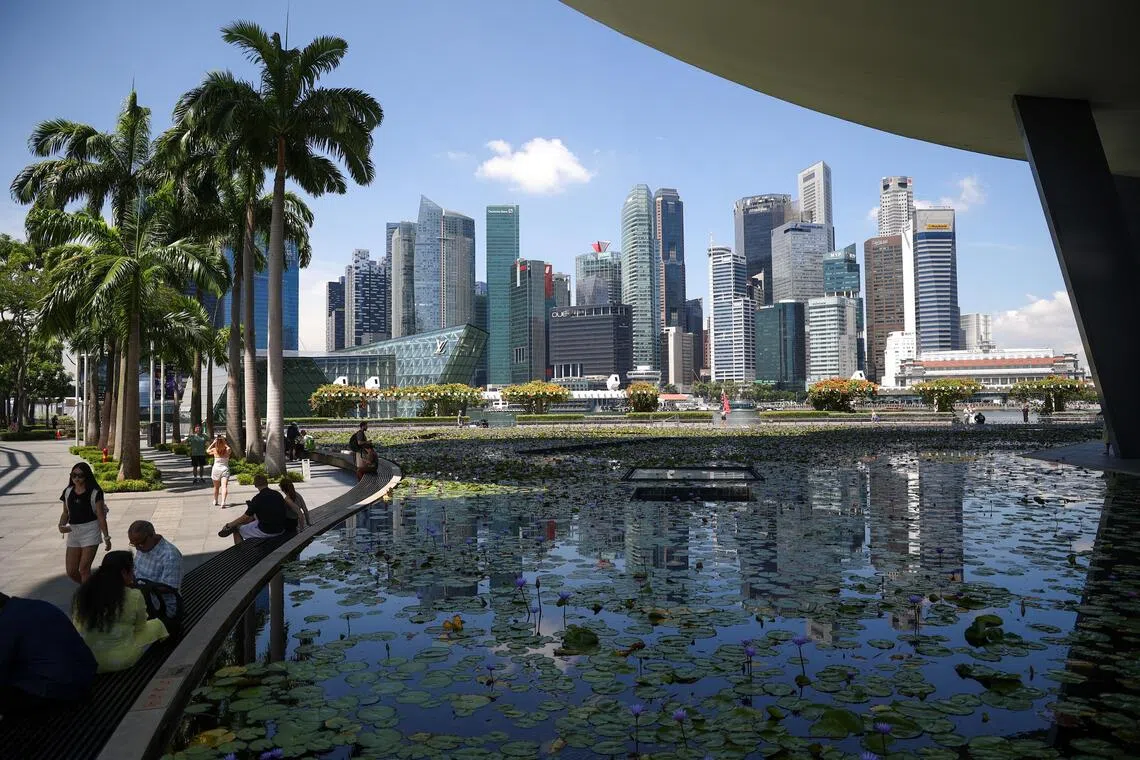Bank-led dividend growth puts Singapore ahead of most global peers in first half of 2025
Sign up now: Get ST's newsletters delivered to your inbox

Singapore-listed companies paid US$8.2 billion (S$10.6 billion) worth of dividends in the first six months of the year.
PHOTO: LIANHE ZAOBAO
Follow topic:
- Global dividends hit a record US$1.14 trillion in H1 2025, according to Capital Group, with 86% of companies raising or maintaining payouts.
- Singapore's core dividend growth was 13.1%, surpassing the global average of 6.2%, driven by strong local bank earnings, especially DBS Bank.
- Financial sector led global growth, and despite some auto companies cutting dividends, Capital Group expects solid dividend growth to continue in H2 2025.
AI generated
SINGAPORE - Global dividends hit a record in the first half of 2025, with Singapore outshining most of its peers with one of the strongest growth rates worldwide.
Singapore-listed companies paid US$8.2 billion (S$10.6 billion) worth of dividends in the first six months of the year, forming part of the US$1.14 trillion distributed globally, according to a Sept 30 study by US fund manager Capital Group.
The Republic recorded 13.1 per cent core dividend growth in the first half compared with the same period a year ago, which is more than double the global average growth rate of 6.2 per cent year on year, the study showed.
Singapore’s performance is just a tad below that of Japan, the country displaying the strongest dividend growth, with core payouts up 13.8 per cent year on year. Japan’s companies paid out a record US$54.9 billion in dividends in the first half, underscoring strong profits and a cultural shift towards returning more capital to shareholders, the study showed.
Ms Alexandra Haggard, head of asset class services for Europe and Asia-Pacific at Capital Group, noted that dividend streams are strong indicators of a company’s financial health and stability.
“Firms that consistently pay and grow their dividends typically demonstrate solid earnings, healthy cash flow, and disciplined management. By tracking dividend trends, investors can gain a better understanding of companies’ performance and their resilience to economic challenges.”
In Singapore, dividend growth was led by the local banks, which posted strong earnings and built solid capital buffers in the first half of 2025, enabling them to step up shareholder returns. The biggest contributor was DBS Bank, which paid 60 cents in interim quarterly dividends in the first half. It also paid additional capital return dividends of 15 cents for each quarter.
Most other companies and business trusts here also raised their payouts, with the exception of agri-food giant Wilmar International, which cut dividends as a result of lower profits from its palm oil division.
The financial sector was the outperformer globally, accounting for around 40 per cent of worldwide dividend growth. The sector saw payouts up 9.2 per cent year on year, hitting a record US$299 billion, with banks accounting for nearly half of that increase.
Other sectors showing strong growth included transport, especially shipping and airports, machinery, in particular aerospace and defence, and software, Capital Group said.
China Construction Bank Corp paid the most dividends in the first half of 2025, distributing a total of US$13.4 billion, ahead of Microsoft, which paid US$12.3 billion. Other heavyweights such as Nestle, Novartis, ExxonMobil, HSBC, Apple, JPMorgan and Taiwan Semiconductor Manufacturing Co also rewarded investors generously, each paying between US$6.6 billion and US$9.7 billion.
The Capital Group study showed that 86 per cent of companies globally either raised or maintained dividends in the first half, with the typical payout rising 6.1 per cent year on year.
Not every sector experienced growth though. Hit by tariffs and competition from electric vehicles, auto companies that still manufacture internal combustion engine cars saw the need to preserve cash, resulting in US$5.4 billion less in payouts in the first half compared with the year before. The largest cuts were made by Stellantis, Mercedes-Benz and BMW.
Nevertheless, Ms Haggard expects momentum to continue for the rest of the year.
“2025 is shaping up to be another good year for global dividends, with a strong first half and well-balanced growth across regions and sectors. We remain optimistic that the second half of 2025 will continue to show solid dividend growth at the global level,” she said.


